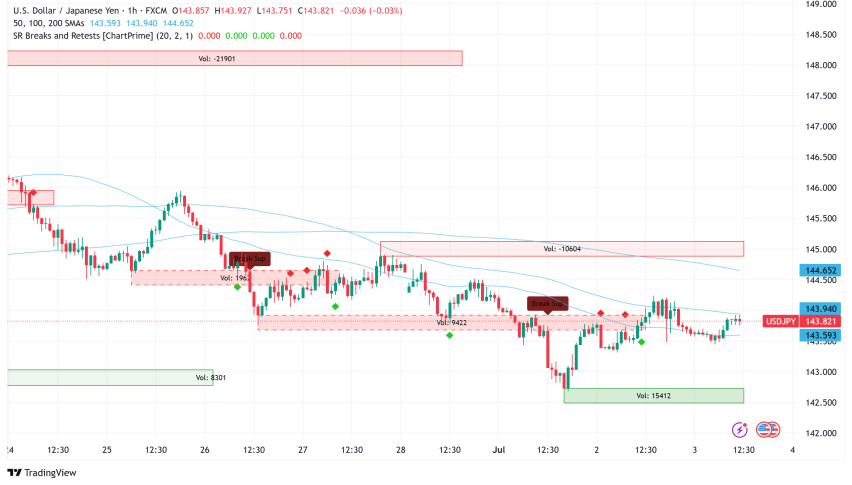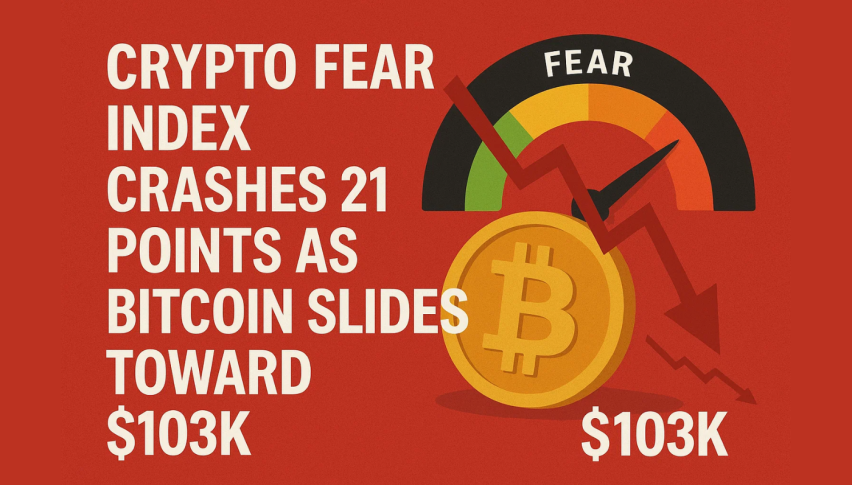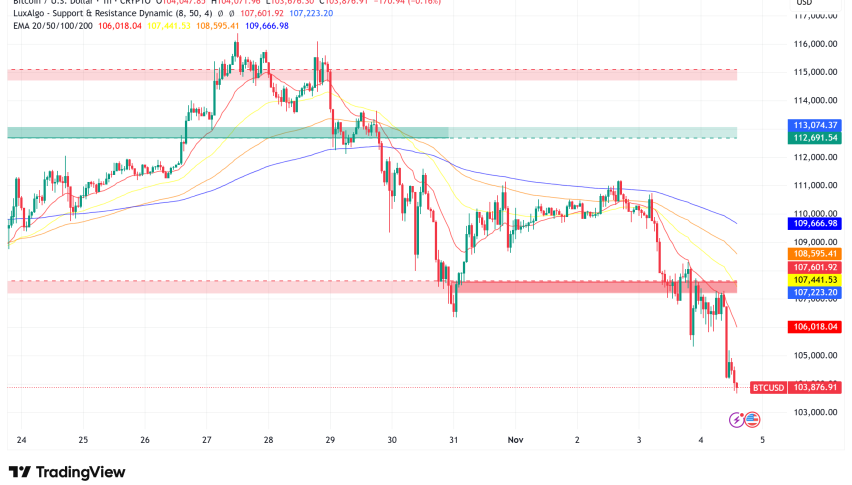USD/JPY Trades Under 144.00 as Markets Await US NFP Data
As traders get ready for the important US Nonfarm Payrolls (NFP) report, the USD/JPY currency pair is still trading below the psychological

Quick overview
- The USD/JPY currency pair remains below the psychological level of 144.00 due to divergent monetary policies between the Federal Reserve and the Bank of Japan.
- Bearish sentiment towards the USD is driven by expectations of rate cuts from the Fed, while the Japanese Yen strengthens amid predictions of tighter monetary policy from the BoJ.
- Trade tensions, including potential tariff increases on Japanese imports, add further instability to the USD/JPY pair.
- The upcoming US Nonfarm Payrolls report is crucial for determining the short-term direction of the USD/JPY, with a negative report likely increasing pressure on the Dollar.
As traders get ready for the important US Nonfarm Payrolls (NFP) report, the USD/JPY currency pair is still trading below the psychological level of 144.00. This is because the Federal Reserve and the Bank of Japan have different expectations for monetary policy, which makes the cross very volatile.

Bearish USD Sentiment Weighs on USD/JPY Pair
The Japanese Yen has been strong against the US Dollar, which is generally getting weaker. It is trading at multi-week highs, even though it is facing headwinds from growing trade concerns and a risk-on mood. The dollar is having a hard time because people are expecting the Federal Reserve to cut rates more and more. Traders now think there is a 25% chance that rates will be cut at the FOMC meeting on July 29 and 30. People think that rate cuts will happen in September, and the markets expect two more cuts before the end of the year.
Jerome Powell, the head of the Federal Reserve, has been cautious about cutting interest rates, saying that the decision should be based on facts. This has not helped the Dollar very much. President Trump’s continued attacks on Powell, in which he called for the Fed chief’s immediate resignation and raised questions about the independence of the central bank, have made things even more difficult.
Japanese Monetary Policy Divergence Supports Yen
The Bank of Japan seems to be sticking to its plan to normalize its monetary policy, which is very different from the Fed’s dovish turn. Recent comments by BoJ Governor Kazuo Ueda that the present policy rate is still below neutral levels have made people more sure that rates will go up again. For more than three years, consumer inflation in Japan has consistently been higher than the central bank’s 2% objective. Companies are still passing on the higher costs of raw materials.
Because of this difference in monetary policy, the USD/JPY relationship has changed fundamentally. The Yen, which usually has lower yields, is gaining from predictions of tighter Japanese monetary policy, while the Dollar is under pressure from expectations of US rate cuts.
Trade Tensions Add Complexity
Uncertainties about trade are still making the pair unstable. President Trump has threatened to raise duties on Japanese imports to 30–35%, which is a lot higher than the existing 24% rate. He says this is because Japan doesn’t want to buy American-grown rice. The government has also said that it is unlikely that a trade deal would be reached by the July 9 deadline, which adds to the uncertainty in US-Japan economic relations.
Weak US Economic Data Fuels Fed Easing Bets
The ADP employment report that came out on Wednesday was dismal. It revealed that private payrolls unexpectedly dropped by 33,000 jobs in June. The numbers for May were also changed, going from 37,000 to 29,000. Because hiring is so slow, people are guessing that the unemployment rate could go up from 4.2% in May to 4.3% in June. This would put further pressure on the Federal Reserve to think about lowering interest rates.
USD/JPY Technical Analysis Points to Downside Risk
From a technical point of view, USD/JPY looks like it could go down much further. The pair’s rejection around the 200-period Simple Moving Average on the 4-hour chart at 144.30, along with negative oscillator readings, shows that the easiest way to go is down.
If the price breaks below the 143.40–143.35 range, it could head toward the 143.00 round figure. This area is a key support level to watch. If it gets weaker, it might go down to the weekly low of 142.70–142.65 and then to the May monthly swing low of 142.15–142.10.
If the price goes up, it will probably run into a lot of trouble at the 200-period SMA at 144.30. If the pair stays above this level, it might cause short-covering and push it up to 144.65 and the psychological 145.00 mark.
NFP Report to Set Direction
The US Nonfarm Payrolls report that comes out today will be quite important for the short-term direction of USD/JPY. A negative number could make people think the Fed would cut rates more and put more pressure on the Dollar. A solid report could give the greenback some brief support.
The larger range of consolidation between 142.00 and 148.30 is still in place, and traders are waiting for a clear break in either direction. If the price goes above 151.00, it will show that there is a lot of upward momentum. If it goes below 142.00, it could go to the 140.00 support zone.
- Check out our free forex signals
- Follow the top economic events on FX Leaders economic calendar
- Trade better, discover more Forex Trading Strategies
- Open a FREE Trading Account


